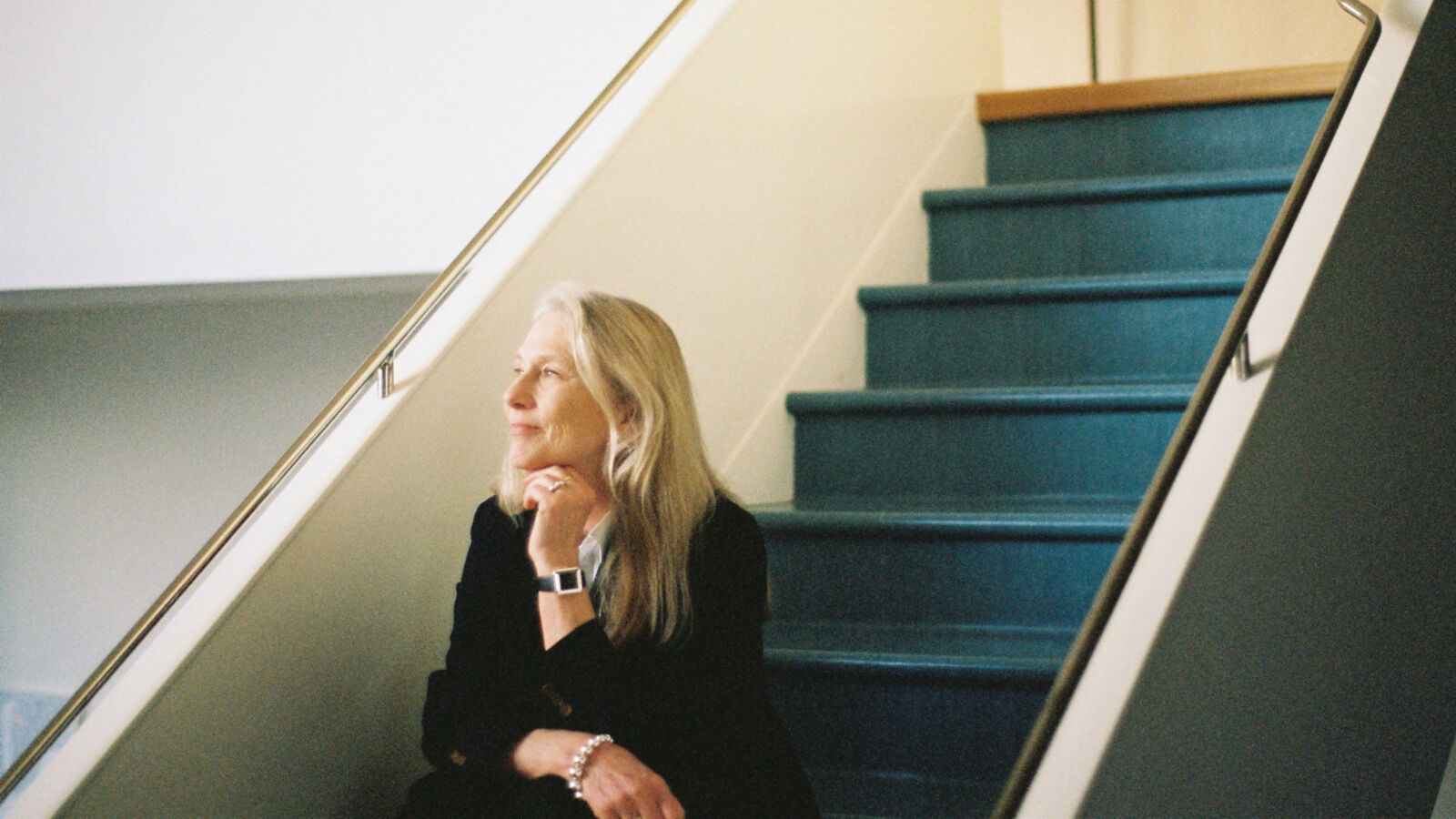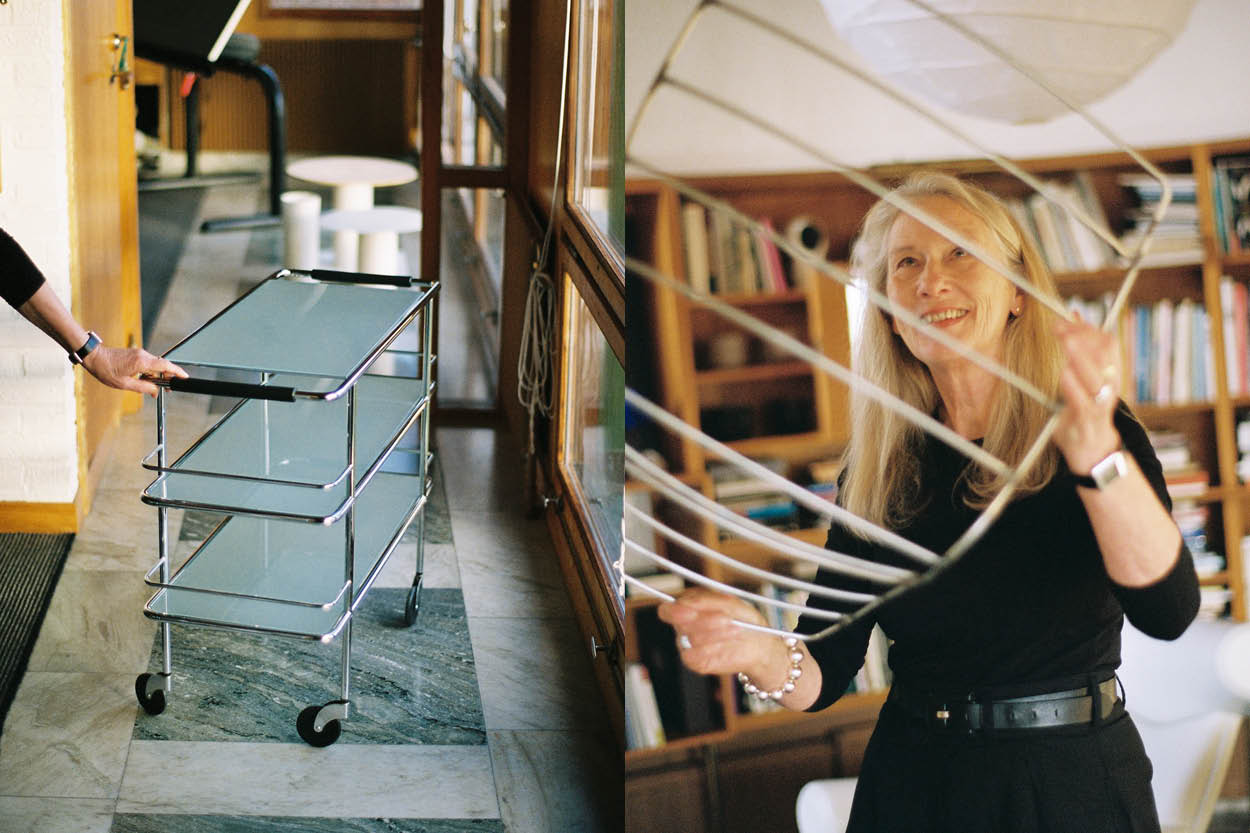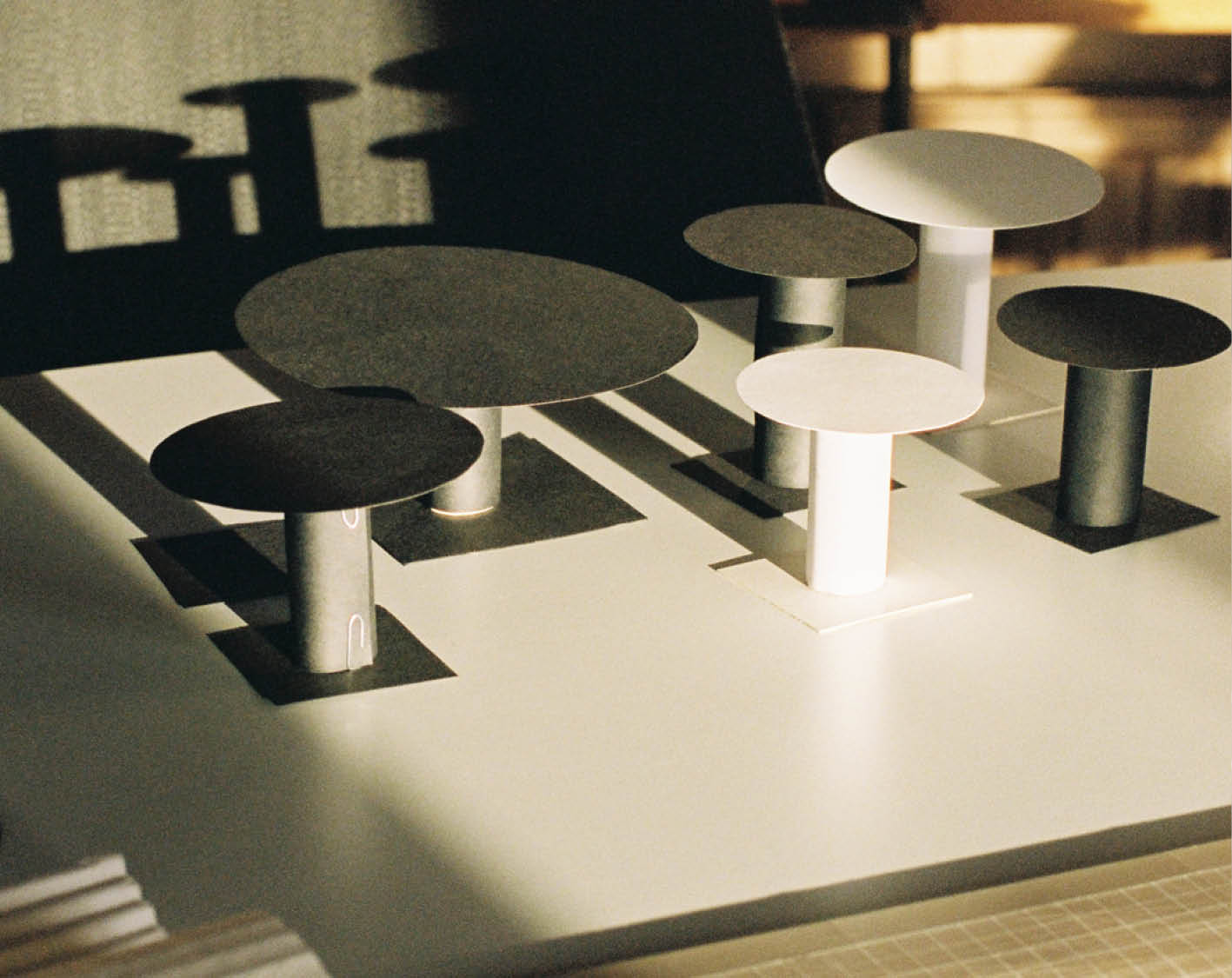Plenty of furniture pieces attract a lot of attention when they first appear. But many of them fade from memory over time. Only a few manage to keep up with changing times. Not because they’re so devoid of character that they blend in anywhere, but, on the contrary, because their remarkable expression remains meaningful. Without a doubt, Gunilla Allard’s works for Lammhults fall into this category. Two such earlier pieces of hers are Cinema and Cargo. In the midst of the pandemic, she and Note Design Studio co-designed the highly acclaimed easy chair, Sunny. Last year Ciao table was launched, a table by Allard that playfully combines geometric shapes.
In 1989, you designed the Cirkus sofa for Lammhults, which received an Excellent Swedish Design award. You were also the first female designer at Lammhults. In an earlier interview, you described Lammhults as having been a fantastic school for you when you were a young designer. Tell us more about that!
Gunilla smiles and elaborates ‘You know, I've been working with Lammhults for nearly 36 years now. When I started here there was a lot of experimentation, play, and conversation, which continued over meals after work. There was, and still is, a strong team spirit at Lammhults, which was a good fit for me coming from the film industry. I like how there are people at Lammhults you can talk solutions with. Problems that I'm stuck on can be solved in a five-minute conversation with the people who work there.’
You live and work in the Stockholm archipelago. What meaning do your studio and your surroundings have for your work?
Gunilla explains, ‘I like to surround myself with things that inspire and calm me. I'm close to nature. It’s where I can think my thoughts and ideas through. You can think so well and clearly while walking in the woods. Big problems become small ones. It gives you a perspective that’s liberating when you’re feeling stressed out and trapped. Nature gives your perception a rest.
Gunilla continues, ‘We’ve lived in the archipelago for the past 16 years, after 30 years in Södermalm, in central Stockholm. I’ve almost always had my studio wherever I’ve lived. Once I tried renting one in an architect’s office space, but I ended up working on my projects late at night and on weekends when no one else was there. There are early phases when a project is fragile and vulnerable. This is when I don’t want any comments or scrutiny from others about what I’m doing. I need to be able to work in peace. Having a studio plays an important role in that. Once I’ve done the groundwork, I have a great need for discussion. That’s when I go to Lammhults for input. But for the first stage of the process, I want to work in peace in my studio.’
What else feeds your creative work?
‘I wouldn’t actually point to anything specific that inspires me. When I’m working on a furniture piece, it can be the research I’m doing or a search for new techniques or exploring new materials — or simply thinking about the piece’s identity. Inspiration can come from travel, architecture, art, and exhibitions, but also from film, theatre performances, music, and things I’ve read.’ Gunilla tells.
Can you describe your work process?
Gunilla explains, ‘What gets me started is realising that there’s something I’m missing. That’s how it begins. I've had the privilege of designing furniture that I think is missing. Why aren’t there coffee tables on wheels? Why are all coffee tables so big and bulky? They should be portable! That’s what led to Chicago. I began by giving the idea a shape. First a sketch, then a model, then large-scale sketches, as well as constant discussions with the factory to solve issues and move forward. I like to go in deep and design all the details — like with Chicago, where I even designed the wheels, which are a key part of the piece’s identity. Sometimes I’ll get anxious in the middle of the process with thoughts like: Have I already seen this somewhere? But over time, I’ve become more chill.’
You’ve said that your furniture shouldn’t dominate a space but instead help the story along, like unassuming, background characters. That it’s the people in the space who perform the leading roles. Can you expand on that thought?
‘Take the Ciao table, for example. I think and I hope that it’ll be a module that different people will use in different ways. Some will sit on it; others will stand on it. It’ll have a life of its own. One that I maybe didn’t even imagine. It’s a lot of fun seeing your products in different environments and how differently they’re use’, Gunilla tells.
Is there anything you feel hasn’t yet been done that you’d like to delve into as a designer?
Gunilla thinks for a few seconds and answers, ‘Not really. I think I've been able to do a lot of great projects. My attitude has also always been that I want to make thoroughly crafted furniture that will have a long life. Take Cinema, for instance. Over the years, it’s been given new faces. Such as when it began being painted rather than only chromed. A piece’s form should be strong enough to withstand change. And it’s really cool to see this when it happens. Another time was when Lotta Agaton lacquered all the Chicago tables dark grey for a trade show — and suddenly they were an entirely new table. I’m experiencing the same thing working with the team at Note, these days. They look at the history of Lammhults and my works with ‘2024’ eyes. They’ve created a new interpretation of Lammhults, which is their point of departure as designers. It’s revitalising to be involved in their work. I’ve known Kristoffer at Note for a long time. It’s fun working with him, partly because of his lack of pretension. By the way, there is one thing I haven’t done yet that I’d still really like to do: design and build a house!‘.
What’s the foremost task of design today?
‘Not to manufacture too many things. To design what we need and manufacture it wisely, based on available resources. I've actually been thinking ‘circular’ all my professional life. It’s a big responsibility to begin producing a new product. You also have to bear in mind that we designers are important to local communities’ Gunilla explains.
I'd like to end our conversation by asking if you have any tips or advice for aspiring designers.
Gunilla tells, ‘Don’t be in too much of a hurry and be thorough! Don’t just go around spouting ideas. It’s so easy nowadays to draw up something that looks good straight away, without being finished. It’s so important to believe in your idea and to work through it rigorously. Work like a researcher, learn the history, and spend time looking for materials. The details are important — partly for the product’s identity and partly because they make it more difficult to copy. Also, make sure you make the most of the people you meet with whom you feel a connection. If I hadn’t met Ragne Boghult, who was the CEO of Lammhults when I started, I wouldn’t be sitting here today. The people you meet are crucial to your success.’
Read more about Gunilla Allard


